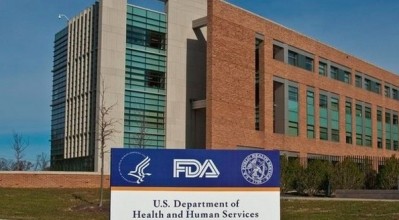From the editor's desk
What should DSHEA 2.0 look like? Here are a couple of suggestions

We seem to be at a weird inflection point in the history of the dietary supplement industry. Consider for a moment the strange phenomenon of an appointee of President Trump getting all activist on new regulations. Didn’t Trump nominees generally have a brief of dismantling regulations, be they redundant and onerous or otherwise?
But the consensus on Gottlieb is that he has fostered a collaborative atmosphere at the agency and one that is based on science. It’s an opportunity that the industry should embrace.
Product registry
An agreement on a premarket registration of products would seem to be a fairly painless fix and one that has been making the rounds of industry for some time now. The low barriers of entry to the dietary supplement industry has been a continual point of risk for the industry, and a cause for bemusement verging on outrage for the industry’s critics. Facilities already must be registered and are subject to periodic inspection. Why not a registration requirement that says, this is who I am, and this is the product I intend to market?
Of course, it wouldn’t be quite that simple. The registry to be relevant would need to include information on the ingredients, something similar to what appears in the Supplement OWL database. What if I said, here I am, this is the product I intend to put on the market, and oh, by the way, it contains a new ingredient for which there is no NDI Notification on file? Or one that does not have GRAS status, whether or not I claim to be working on that?
Would FDA just turn a blind eye in that case? That seems hard to fathom. If they didn’t, then the registry starts to look a lot like premarket approval, something that is bound to stick in the craw of at least a few stakeholders.
Mandatory registration may help raise barriers to entry. Getting into the industry is someway addressed by the inspection authority in DSHEA (cGMPs), plus the facilities registration requirement in the 2011 food safety law, along with the pre-notification requirement for new dietary ingredients (NDIs) – but the industry has been found wanting on GMP compliance.
NDI clarifications
One thing that clearly needs fixing is the NDI Notification process. In another article on today’s NutraIngredients-USA’s daily newsletter, some legal experts offer their opinion on what Gottlieb had to say on this. Suffice it to say that while the current system has not exactly foundered, it seems to have come up lame. Rejection rates are high and FDA and some in industry have taken the view that there is a large amount of underreporting; in other words, there are ingredients out there that should have NDI filings attached to them and don’t. And there ought to be a central database on NDI Notifications, as there is with GRAS submissions.
Some companies have opted for self-affirmed GRAS status on their ingredients instead, deeming the process to be more straightforward and certain. This gets them some regulatory cover and, assuming the dossiers were prepared properly, at least someone has vetted the safety of the new ingredient.
Another issue that must be addressed is how the work that companies do to develop their new ingredients can be protected. One suggestion has been a ‘master file’ type of system, in which company A that files the first NDI on an ingredient can redact some of their technical information and could grant a license of sorts to company B. Company B then either antes up to use the master file, or goes ahead and files its own fully proprietary NDI.
As matters stand, once the NDI Notification is on file, company B seems free to say, hey, my new ingredient is now legit! Off to market we go, without having to spend a dime on the kind of tox work and so forth that company A had to invest in. Observers have said this is a significant disincentive for companies to do these filings.
Synthetic production technology
If the goal of this entire process is to retrofit DSHEA for another decade or more, another issue to wrangle with is the status of synthetic ingredients. The technology of synthetic biology is advancing rapidly. Ingredients produced through fermentation via select organisms—whether genetically modified or no—will soon be commonplace. Some ingredients produced via regular old chemical synthesis already are.
At the moment FDA objects to these synthetic copies of botanical constituents, an objection that strikes some in the industry as almost Talmudic in nature. FDA’s view is that because an ingredient made in a vat was never ‘present’ in the botanical in the first place, it doesn’t meet the dietary ingredient definition as outlined in DSHEA. This strikes the industry as overly narrow.
As it approaches its 25th birthday I think we can all agree that DSHEA has held up remarkably well. But the world has changed drastically. The Internet was just a stripling when DSHEA started to take hold, and now it dominates the way we communicate with each other and the way companies communicate with their consumers.
It’s clear that putting all the emphasis or burden on FDA is not appropriate and industry needs to do its part with some concessions that will boost transparency, trust and confidence. It’s about grasping the opportunity presented by a receptive and engaged FDA, a public desperate for a change in the healthcare paradigm, and an industry that is spending more and more time asking, “what’s next?”

















